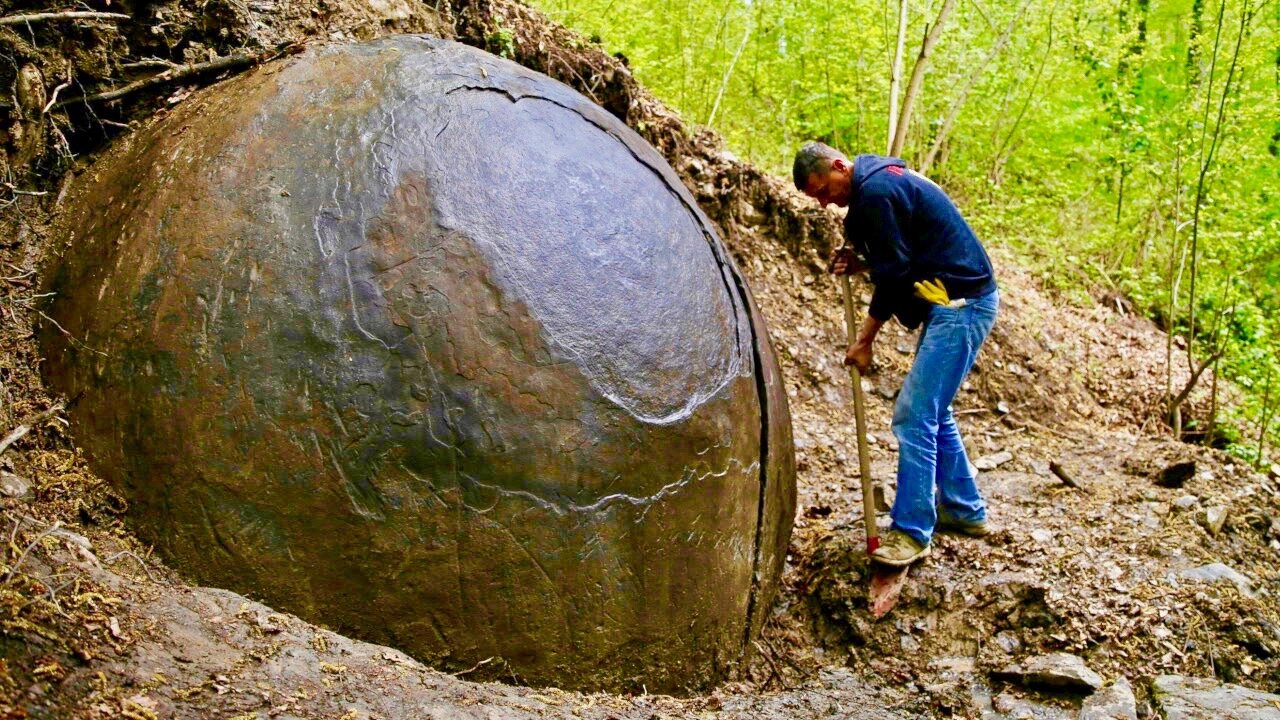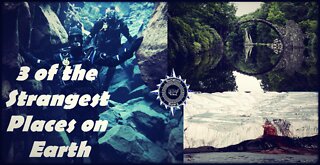Premium Only Content

Top 10 Strangest Archaeological Discoveries Found on Earth
Giant stone spheres — some dating as far back as A.D. 600 — pepper the Diquis Delta of southern Costa Rica. Known locally as Las Bolas ("The Balls"), these monuments were the works of a Pre-Colombian civilization, and most are made from gabbro, a rock that forms from molten magma. The people who carved the stones into their perfectly spherical shapes likely did so using other small stones, according to archaeologists who study the ancient rocks.
Many non-experts have speculated that the so-called Diquis Spheres were used for astronomical purposes, while others think they may have pointed the way to significant places. The truth is that no one knows for sure. The Chibchan people who once populated Costa Rica and other parts of Central America vanished in the wake of the Spanish conquest, and the purpose of the spheres vanished with them.
Nazca Lines
From the ground, the Nazca Lines of Peru are nothing spectacular. However, seen from the air, from which they were first spotted by commercial aircraft in the 1920s and 30s, they are staggering.
Archaeologists agree the enormous shapes there are hundreds of them, ranging from geometric lines to complicated depictions of animals, plants and imaginary figures were made over 2,000 years ago by people of the pre-Inca Nazca culture, who simply removed the red surface pebbles to reveal the lighter earth below in designs of their choice.
Just why they did it remains enigmatic, prompting conspiracy theorists to float ideas about alien landings and ancient astrology. The lines were more likely to have been a ritual communication method with the Nazca's deities, say archaeologists.
Gobekli Tepe
Humans first settled into permanents towns, farmed and then built temples, in that order, starting in 8,000 B.C. Or did they?
An amazing archaeological discovery made in 1994 at Gobekli Tepe, a rural area of Turkey, has blown that hypothesis apart, prompting new questions about the evolution of civilization.
Containing multiple rings of huge stone pillars carved with scenes of animals and dating to the 10th millennium B.C., Gobekli Tepe is considered the world's oldest place of worship. Yet evidence also suggests the people who built it were semi-nomadic hunters, likely unaware of agriculture, which followed in the area only five centuries later. Because of Gobekli Tepe, archaeologists now have to ask which came first.
The Sacsayhuaman (also Saksaywaman or Saqsawaman, meaning ‘Royal Eagle’) fortress-temple complex lies at the northern edge of the former Inca capital Cuzco. Constructed during the reign of Pachacuti (1438-1471 CE) and his successors, its massive, well-built walls remain today as a testimony not only to Inca power but also the skills of Inca architects and their approach of blending their monumental structures harmoniously into the natural landscape. The Sacsayhuaman is still used today for reenactments of Inca-inspired ceremonies.
The Frightening Discovery of the Mount Owen Claw
Nearly three decades ago, a team of archaeologists were carrying out an expedition inside a large cave system on Mount Owen in New Zealand when they stumbled across a frightening and unusual object. With little visibility in the dark cave, they wondered whether their eyes were deceiving them, as they could not fathom what lay before them—an enormous, dinosaur-like claw still intact with flesh and scaly skin. The claw was so well-preserved that it appeared to have come from something that had only died very recently.
The archaeological team eagerly retrieved the claw and took it for analysis. The results were astounding; the mysterious claw was found to be the 3,300-year-old mummified remains of an upland moa, a large prehistoric bird that had disappeared from existence centuries earlier.
The upland moa (Megalapteryx didinus) was a species of moa bird endemic to New Zealand. A DNA analysis published in the Proceedings of the National Academy of Sciences suggested that the first moa appeared around 18.5 million years ago and there were at least ten species, but they were wiped from existence “in the most rapid, human-facilitated megafauna extinction documented to date.”
Music: The Wolf and the River by Dhruva Aliman
Amazon- https://amzn.to/2Mgr7pg
https://music.apple.com/us/artist/dhruva-aliman/363563637
https://dhruvaaliman.bandcamp.com/album/the-wolf-and-the-river
http://www.dhruvaaliman.com/
Spotify - https://open.spotify.com/artist/5XiFCr9iBKE6Cupltgnlet
#history
#mystery
#interesting
-
 49:16
49:16
Knowledge Land
11 days agoThe Prehistoric Volcano That Nearly Wiped Out All Humanity - Full Documentary
412 -
 1:28
1:28
Unexpected History
2 years ago3 of the Strangest Places on Earth
10 -
 LIVE
LIVE
CLUJ
1 hour agoCHRISTMAS EVENING HYPE!! LETS HAVE FUN GAMING!!
380 watching -
![I AM FINALLY BACK :: PUBG: BATTLEGROUNDS :: RUMBLE NOW HAS GIFTED SUBS!!! [Merry Christmas] {18+}](https://1a-1791.com/video/fwe1/22/s8/1/e/f/C/6/efC6v.0kob-small-I-AM-FINALLY-BACK-PUBG-BATT.jpg) LIVE
LIVE
a12cat34dog
3 hours agoI AM FINALLY BACK :: PUBG: BATTLEGROUNDS :: RUMBLE NOW HAS GIFTED SUBS!!! [Merry Christmas] {18+}
339 watching -
 LIVE
LIVE
STARM1X16
3 hours agoMerry Christmas Fortnite
178 watching -
 2:45:33
2:45:33
Sgtfinesse
3 hours agoMerry Christmas Night
9.04K4 -
 LIVE
LIVE
tacetmort3m
19 hours ago🔴 LIVE - (MERRY CHRISTMAS) TIME TO SPREAD DEMOCRACY - HELLDIVERS 2 OMENS OF TYRANNY
47 watching -
 12:42
12:42
Cooking with Gruel
18 hours agoBrown Butter Trifle with Salted Caramel and Cinnamon Apple
7591 -
 2:46
2:46
BIG NEM
6 hours agoDiscovering RAKIJA: The Holy Liquer of the Balkans
441 -
 1:11:38
1:11:38
Film Threat
11 hours agoCHRISTMAS DAY CHILL STREAM WITH CHRIS GORE | Hollywood on the Rocks
123K24